Introduction
Hello!
The electric guitar, the star of band instruments, offers countless ways to enjoy it. Beyond playing, you can shape your sound with amps and effects pedals, build a collection, pair it with stylish straps, or even take it a step further by customizing it.
However, the idea of customizing a guitar can seem intimidating. Drilling holes, rewiring, repainting, or even applying relic (artificial aging) finishes are feats attempted only by the brave. There's always the risk of damaging your guitar, making it feel out of reach for amateurs like us.
That said, customizing is all about creating a one-of-a-kind guitar tailored to you. The allure of owning such a unique instrument is hard to resist—and you shouldn’t have to resist it!
So in this article, I’ll introduce simple ways to customize an electric guitar, even if you lack technical expertise. Drawing from my own experience, I’ll guide you into the exciting world of guitar customization. Let’s take that first step together!
Precautions
Before diving into the main topic, here are some important points to keep in mind:
1. Prioritize Safety to Prevent Injuries and Accidents!
This is basic but absolutely crucial. Customization often involves using tools, so take care to avoid injuries or accidents. Be mindful of your surroundings—avoid working in rooms where small children or pets are present.
2. Double-Check Part Dimensions!
Electric guitars come in various designs depending on the manufacturer and model. Even within the same brand and model, differences in production year or factory can lead to variations in specifications.
A common issue is the difference between metric and imperial (inch) standards. Mismatched parts might not fit correctly or could cause malfunctions.
Relying solely on information from the internet can result in major mistakes. Whenever possible, measure the dimensions yourself or consult a repair technician.
3. Customization is at Your Own Risk!
This isn’t an excuse to dodge responsibility—it’s a reality to consider.
Some new electric guitars come with manufacturer warranties valid for several years after purchase. If you customize the guitar during the warranty period, it might void the warranty. It’s best to wait until the warranty period ends before making any modifications.。
Taking on Customization
Let’s dive into the main topic!aa
The guitar I’ll be customizing is my trusty Bacchus Jazzmaster-type, WINDY (manufacturer warranty expired).

The goal is to enhance its strengths while addressing its weaknesses. Let’s get started!
[Customization 1: Output Jack]
The output jack, where the instrument cable plugs in, is prone to wear and tear over time, essentially making it a consumable part. My guitar was no exception—it started having contact issues, which left me wondering what to do (even though it hasn’t been that long!).
While some issues can be temporarily resolved using contact cleaner or by thoroughly polishing the jack, these fixes are often short-lived.
That’s when I came across this solution:
By replacing the jack, not only will it be brand new, but it will also have additional contact points, improving its grip and enhancing signal transmission efficiency. Sounds like a great opportunity to upgrade—let’s give it a try!
Start by removing the strings from your guitar and taking off the pickguard. This is also a great chance to clean areas that are usually hard to reach. Once the jack is exposed, take a photo of the existing wiring. This will serve as an essential reference when rewiring later.
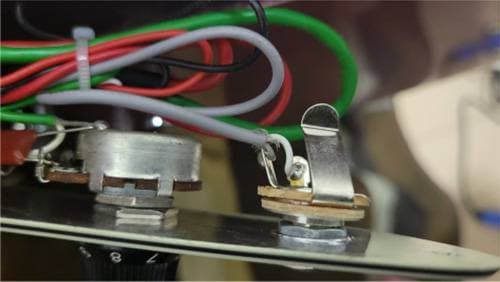
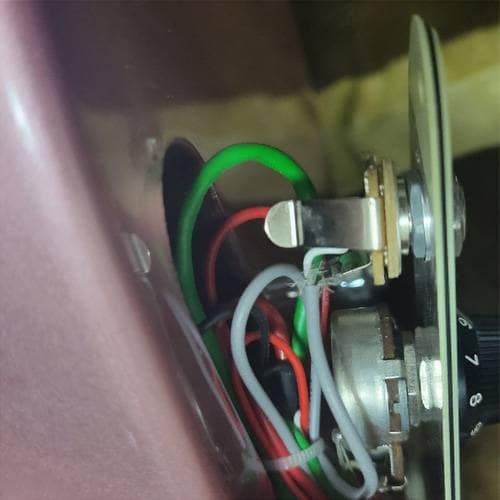
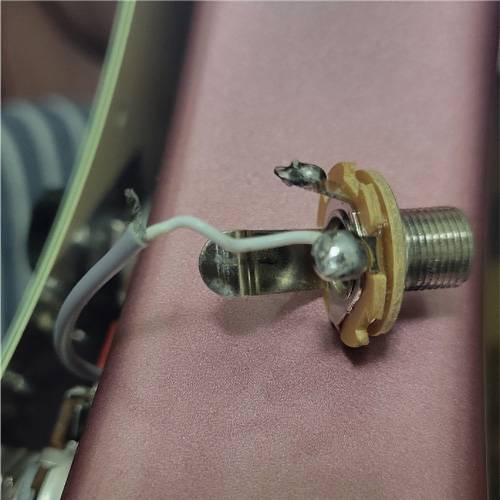
At this point, I discovered that the wiring on my guitar's jack was nearly severed. That was the culprit behind the contact issues! I decided to replace the jack and fix the wiring at the same time.
This step involves soldering. While not overly complicated, be mindful of fire hazards and burns during the process. Safety first!
Once the soldering is complete, the issue should be resolved—or so I thought. But then, I hit another snag: the new jack was slightly larger than the original and wouldn’t fit through the hole in the pickguard.
Upon closer inspection, the difference was less than a millimeter. To address this, I used a file to carefully enlarge the hole in the pickguard until the jack fit snugly.
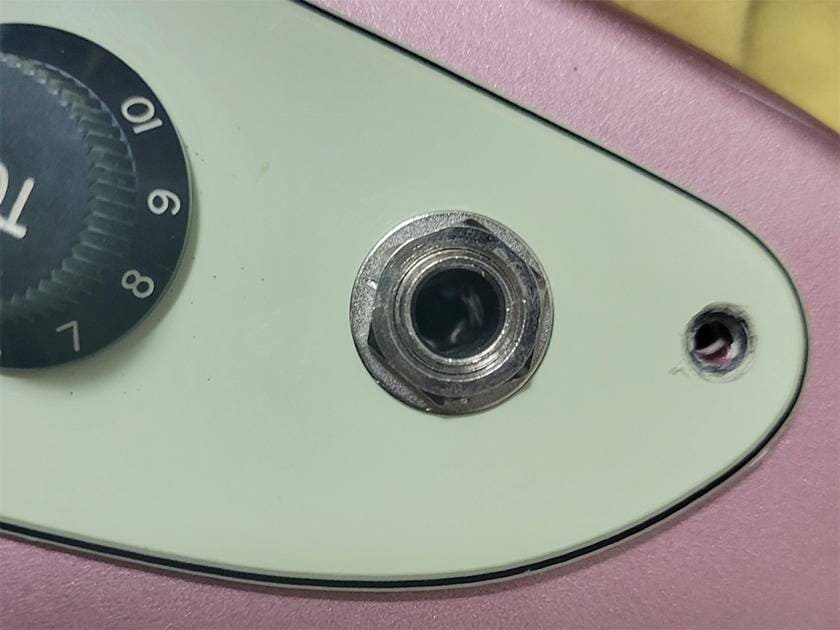
And it’s complete! The new jack fit perfectly in the end. It holds the plug firmly, eliminating any wobble and providing a reassuring stability.
[Customization 2: Locking Tuners]
Next up is installing locking tuners!
The Bacchus WINDY is an excellent guitar—affordable yet unique and highly functional. However, the stock tuners reflect some cost-cutting measures.
I’ve noticed issues like slipping during tuning or sudden, dramatic pitch changes. While tuning stability during performance hasn’t been a major problem, tuners are a critical component that can benefit from an upgrade.
Ideally, I wanted tuners with a locking mechanism to secure the strings. After some research, I found just the right ones for the job!
GOTOH / SG381-MGT-07-L6-Chrome
The goal here is to improve tuning precision and make string changes less stressful.
GOTOH offers a wide range of tuners, but the MG-T (Magnum Lock-Trad) series caught my attention. These tuners allow strings to be locked in place with a simple twist of a dial, making string changes significantly easier.
According to reviews on Soundhouse, some users have successfully installed these tuners on Bacchus guitars without requiring any modifications. That’s a promising sign, and it seems worth giving it a shot.
While they’re a bit pricey, I’ve decided to take the plunge and install them. It’s an investment I’m excited to make!

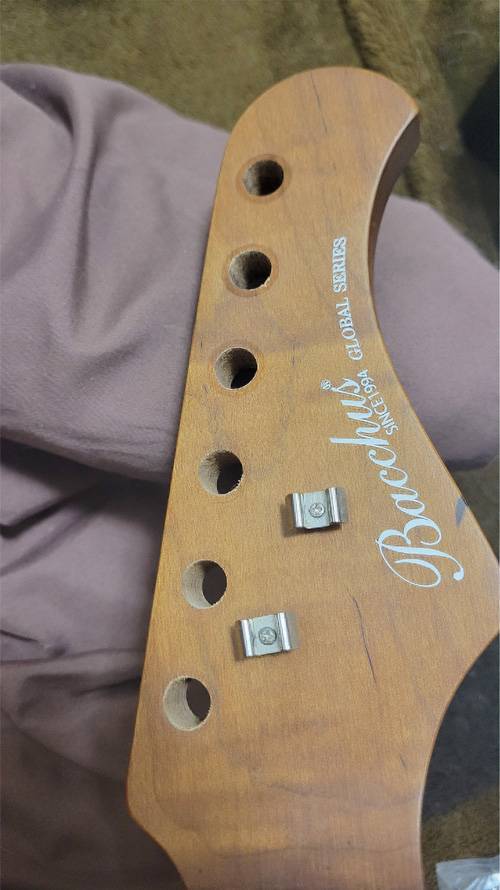
Loosen the hex nut securing the tuners and the screws on the back, then carefully remove the old tuners. Once all the original tuners are off, it’s time to install the locking tuners.
This time, the tuners have shafts of different lengths: tuners with green markings are designated for the 1st to 3rd strings, so make sure to use them accordingly.
As with the output jack replacement, the holes were slightly too small, making it a bit tricky to fit the new tuners. Be cautious here—forcing them in can crack the headstock. Take your time and proceed gently.
Once the tuners are in place, tighten the nuts and screws, and now for the moment of truth...
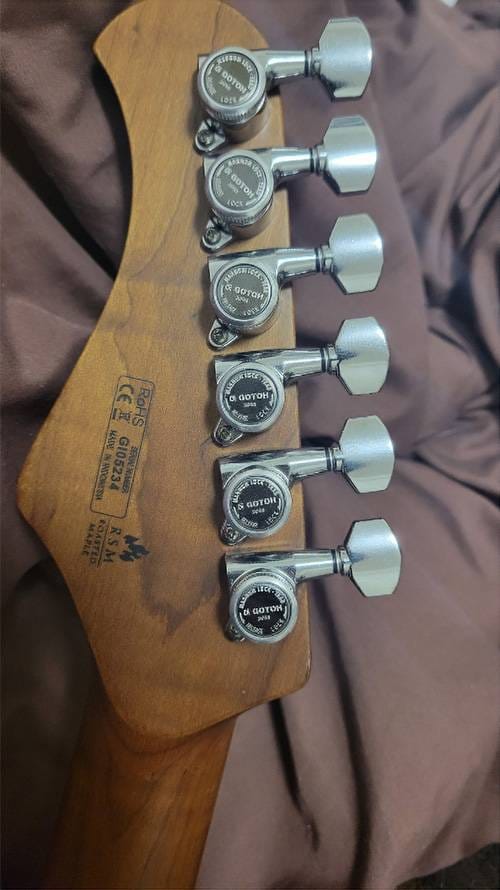
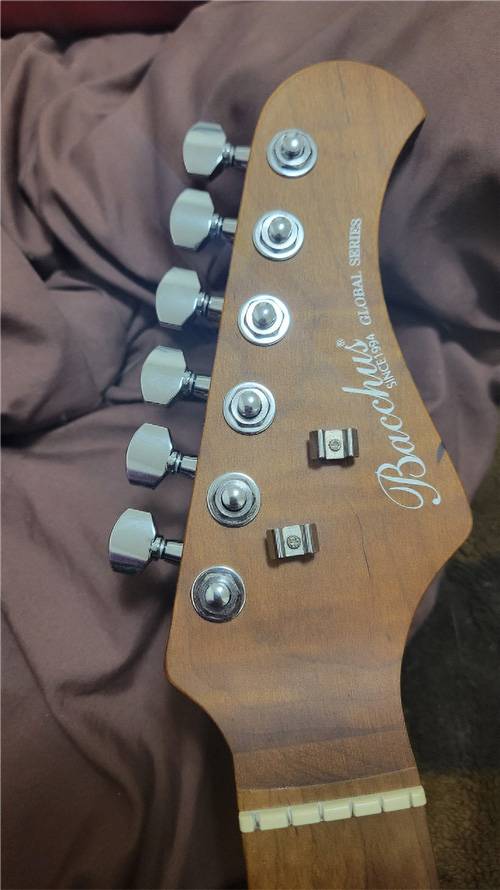
Done! The guitar now has a bulkier, more mechanical look, which I personally think makes it even cooler. A definite upgrade in both style and functionality!
Changes After the Modifications
After replacing the jack and tuners, the WINDY feels like it has undergone a more significant transformation than I expected.
The locking tuners have made string changes incredibly convenient. The simplicity of locking the strings with just a twist of the dial is truly impressive and a huge time-saver.
Switching to locking tuners has also affected string tension, making it easier to press the strings. Although it feels slightly unfamiliar at first, I’m sure I’ll quickly adapt and enjoy the improved playability.
As for the sound, the changes are noticeable. The high frequencies now shine through more distinctly—not harsh or piercing, but with a sparkling quality. Compared to the previously subdued tone, the difference is striking. It’s enough of a change to warrant some fine-tuning in my sound setup.
Future Plans
The two modifications I made this time felt more like improvements rather than true customizations. However, for the next step, I’d like to take on something that feels more like a genuine customization project.
For example, here’s a tremolo arm that can replace the bridge. The best part is that it doesn’t require drilling into the guitar body, making it a relatively easy modification to install. While the price is a bit steep, it’s definitely tempting.
Using a tremolo arm can sometimes cause tuning instability, but with the newly installed locking tuners, this issue should be significantly minimized.
In Closing
The experience of customizing a guitar and gradually creating something uniquely your own can be addictive. It also deepens your attachment to the instrument.
That said, replacing parts endlessly until only the body remains might feel a bit hollow in the end. For me personally, I’d like to keep customization as a means to an end and enjoy it without letting it become the goal itself.
Thank you for following along on this journey!
The column “sound & person” is made possible by your contributions.
For more information about submissions, click here.





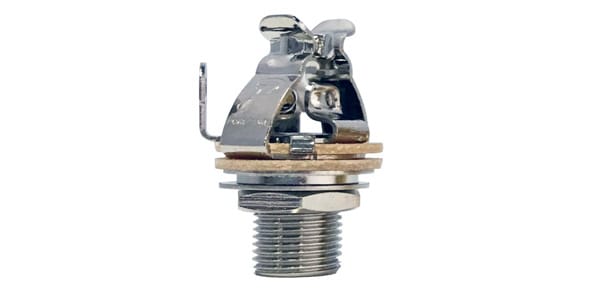
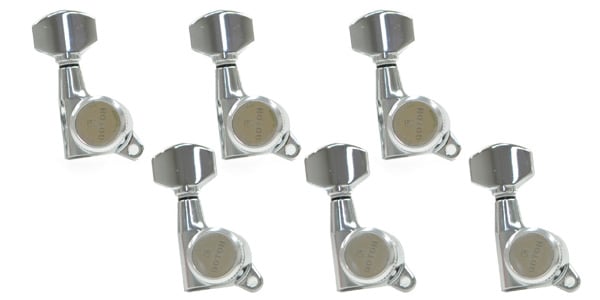
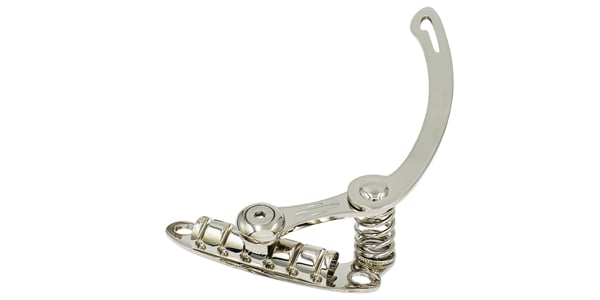









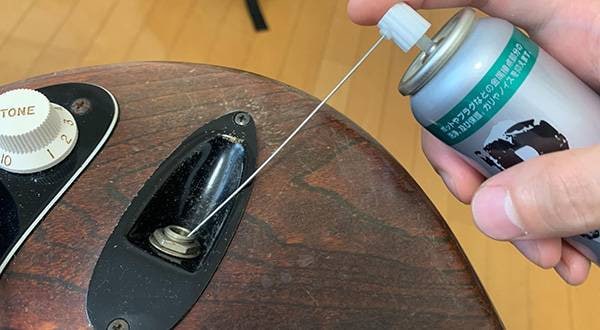

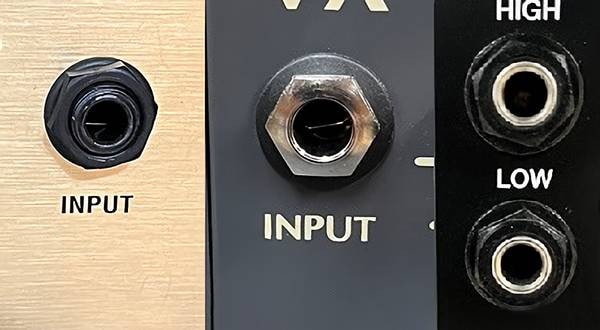
![How to choose and order when replacing GOTOH guitar pegs [Latest in 2025]](/contents/uploads/thumbs/2/2021/5/20210524_2_12921_1.jpg)
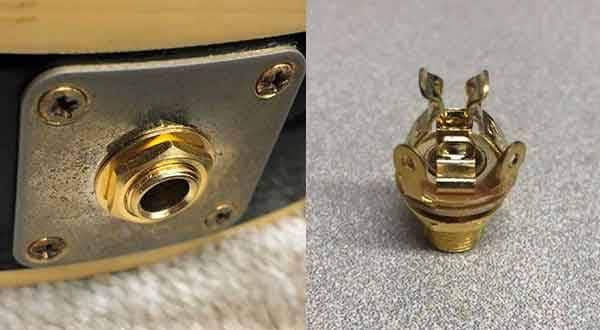
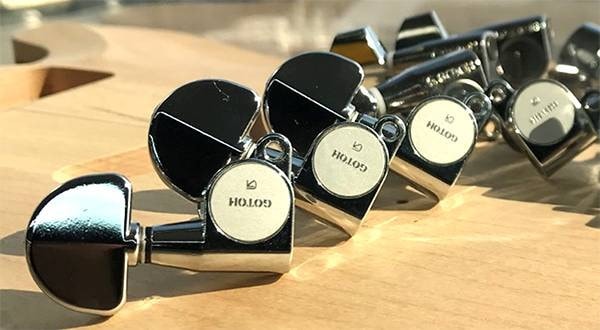
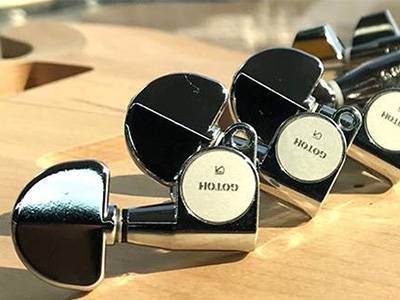 GOTOH(ゴトー)ギター用ペグ よくある質問まとめ!
GOTOH(ゴトー)ギター用ペグ よくある質問まとめ!
 DIY ギターメンテナンス
DIY ギターメンテナンス
 パーツの配線を知ろう
パーツの配線を知ろう
 ギターのお手入れ
ギターのお手入れ
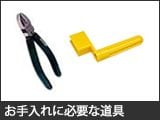 お手入れに必要な道具
お手入れに必要な道具
 ギターの各部名称
ギターの各部名称















